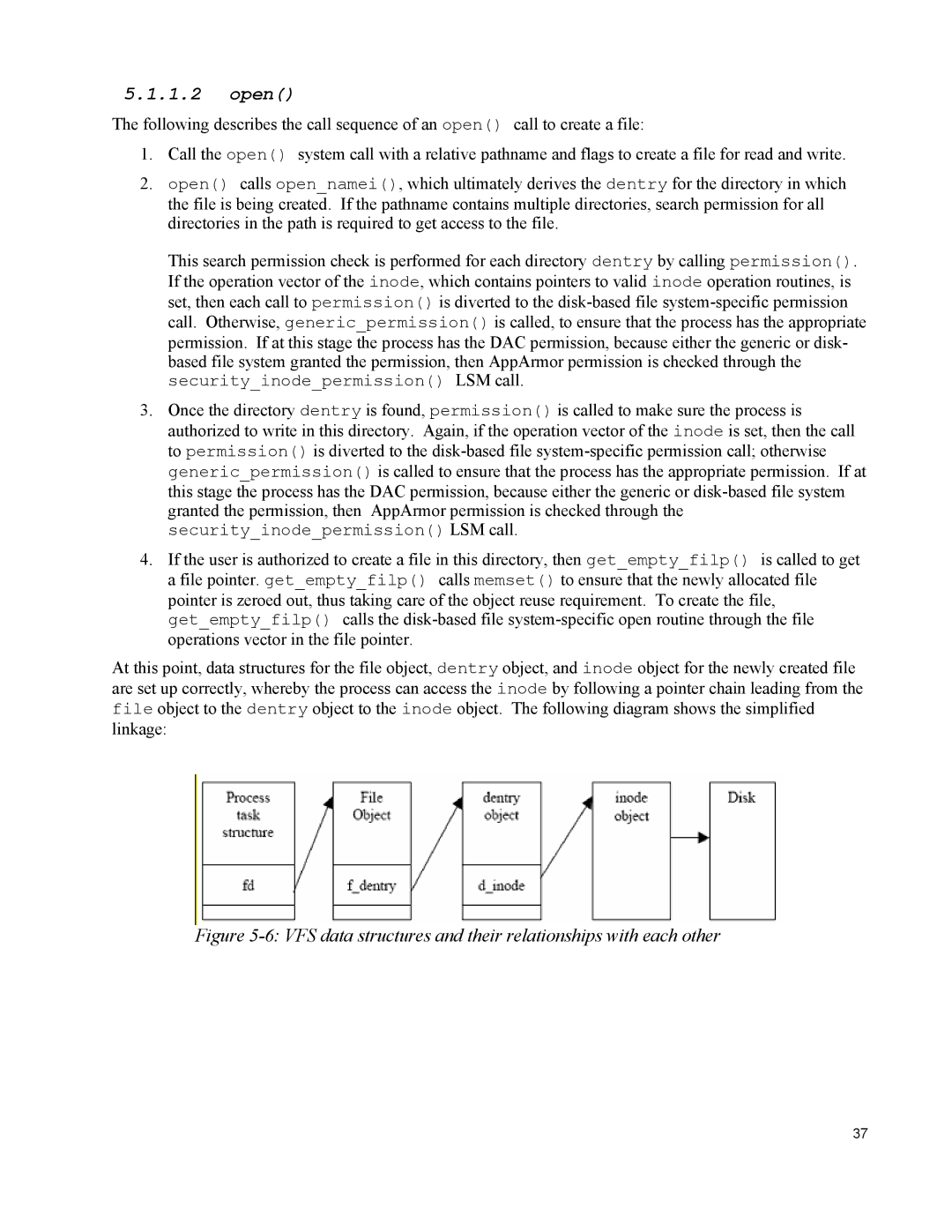
5.1.1.2open()
The following describes the call sequence of an open() call to create a file:
1.Call the open() system call with a relative pathname and flags to create a file for read and write.
2.open() calls open_namei(), which ultimately derives the dentry for the directory in which the file is being created. If the pathname contains multiple directories, search permission for all directories in the path is required to get access to the file.
This search permission check is performed for each directory dentry by calling permission(). If the operation vector of the inode, which contains pointers to valid inode operation routines, is set, then each call to permission() is diverted to the
3.Once the directory dentry is found, permission() is called to make sure the process is authorized to write in this directory. Again, if the operation vector of the inode is set, then the call to permission() is diverted to the
4.If the user is authorized to create a file in this directory, then get_empty_filp() is called to get a file pointer. get_empty_filp() calls memset() to ensure that the newly allocated file pointer is zeroed out, thus taking care of the object reuse requirement. To create the file, get_empty_filp() calls the
At this point, data structures for the file object, dentry object, and inode object for the newly created file are set up correctly, whereby the process can access the inode by following a pointer chain leading from the file object to the dentry object to the inode object. The following diagram shows the simplified linkage:
Figure 5-6: VFS data structures and their relationships with each other
37
